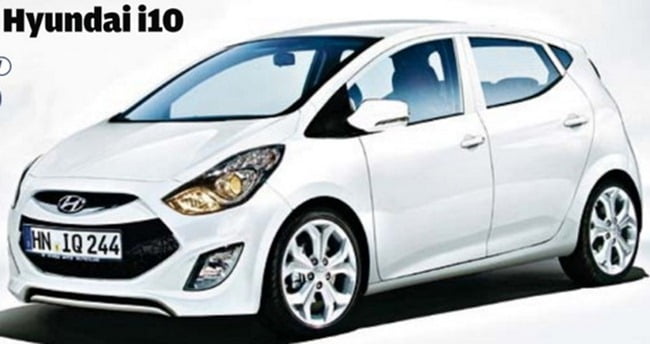The current generation of Hyundai’s bestseller Hyundai i10 got the fluidic treatment once the company started switching to the fluidic school of design. The car is actually the bestseller in the company’s stable and the car got a mid career refresh a in December 2012 in Turkey which we believed would be the last refresh for the car before the next generation of the model came in. And as long as we’re talking about the next generation, we have a piece of information that you would love to hear.
The German auto magazine, AutoBild has published a rendering of the next generation of the car and from what we see, the render seems pretty much closer to what we would get to see in real life. The part which is the most accurate when compared with the spy-shots of car which have been flooded the interweb is that the rear quarter glass merges into the the C-Pillar. Now this is the part which lends credibility the design.
The next generation i10 will be produced at the company’s Turkey plant and the production facilities are being ramped up there. From there on, it will spawn a compact sedan sometime early 2014 which would be launched globally then in a phased manner. The car will get 1.0 litre and 1.2 litre petrol engines under the hood and shall be offered in 3 door as well as 5 door variants.
The next gen 2014 Hyundai i10 will break cover at the Frankfurt Motor Show in September 2013 and as far as the Indian launch is concerned, it will be showcased at the Noida Auto Expo 2014 in February 2014. It will be produced at their plant and as would be the case with the Turkish plant, Indian plant might just get to produce the compact sedan as well. What still is the most interesting news is that if it will get a diesel heart which could make it reach the top of the sales charts. There is a proposed 1.1 Litre Diesel engine to be fitted in the Indian 2014 Hyundai i10 Diesel which may turn the fortunes of Hyundai in India even higher. We will keep a close watch on the developments and will keep you posted, stay tuned to Car Blog India.
image credits – auto.blog.rs


